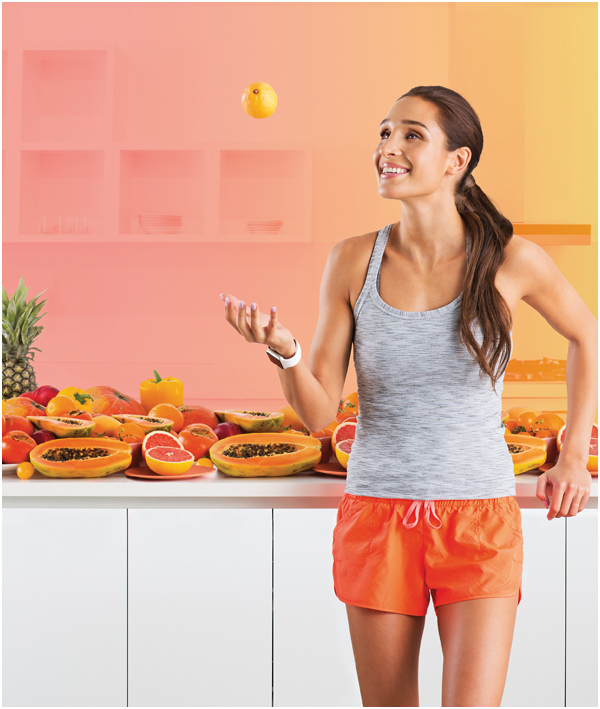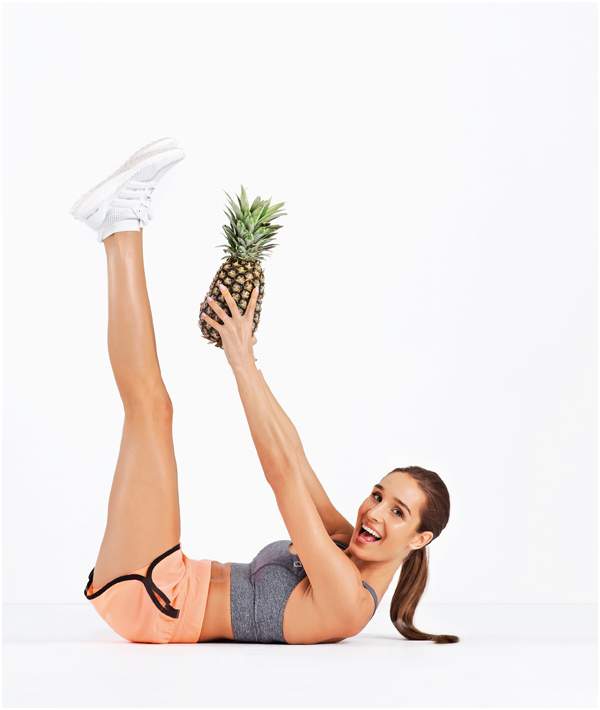
BECOMING HEALTHY, CONFIDENT & STRONG
bikini body
noun, singular To me, a “bikini body” is not a certain body weight, size, or look. It’s a state of mind where you are confident, healthy, and strong. It is when you feel good about yourself and your body.

I am a woman who has grown up in the age of mobile phones, social media, and apps. What this means is that conversation is everywhere, and both good and bad messages can be spread far and wide. The way social media is rapidly able to distribute messages to the world is phenomenal. Unfortunately, it is often the wrong messages that we see trending in our news feeds.
How is it anyone’s right to set the standard? Why should a celebrity’s appearance be the “body goal” for our society, when often it is their job to look a certain way? It’s fine to idolise the person, but often young, impressionable girls idolise the body because of the way media pitches imagery.
Along with this altered perception of beauty, I now, more than ever, see people being publicly abused and shamed on social media, not even just for their appearance, but for their desire to change, their desire to do better and feel better. No one should be shamed for trying to improve themselves.
THE EXPECTATIONS WE HAVE OF OURSELVES ARE HIGHLY DRIVEN BY WHAT WE SEE, TYPICALLY IN THE MEDIA AND ON SOCIAL NETWORKS. THAT’S THE PROBLEM—OUR EXPECTATIONS AND GOALS SHOULD BE BASED ON WHAT WE FEEL, NOT ON WHAT WE SEE.
Because people’s perception and expectation of “normal” has changed so dramatically, it alters their view of what truly is normal. Now, some people are attacked for being what should be acceptable, but instead they are shamed for not looking like what our manipulated perception of reality shows us.
MY CLIENTS ALL HAVE INDIVIDUAL GOALS AND THEIR TRANSFORMATION JOURNEYS ARE UNIQUE TO THEM.
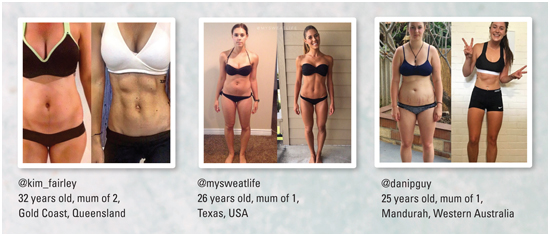
WE AS WOMEN are being attacked by a new breed of soldier. We are becoming victims of so-called “keyboard warriors,” who are playing directly into the poor messaging of mass media. The worst part? These keyboard warriors can often be women.
keyboard warrior
noun, singular A person who believes their opinion in relation to your life choices and appearance matters. They often write rude, hateful, and disheartening comments about you on social media, thinking that it doesn’t affect you.
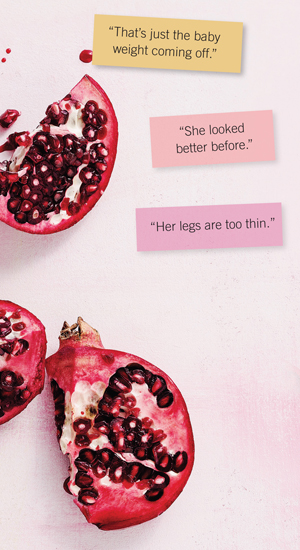
So, in this generation of keyboard warriors and mass media trends, what effect is all this having on body image and the associated issues of anxiety, depression, and body dysmorphia for women of all ages? We have men degrading and body-shaming women, but we also have women doing the same to other women. This needs to stop.
I believe that one of the main reasons women suffer from anxiety and depression is because of the way they look or, more accurately, the way they feel about their appearance. In my opinion, a huge amount of this negative emotion can be caused by messages about women in the media and society. More specifically, the way women speak about each other’s bodies, as well as their own.
After continually seeing huge amounts of negativity in the media, I wanted to make a stand and help create change in the way women see their bodies. There is so much negativity surrounding women and the supposed “benchmarks” for their appearance that it is easy to understand why so many women who would like to wear a bikini are uneasy about it.
“WHY SHOULD WE BE REQUIRED TO LOOK, ACT, OR DRESS A CERTAIN WAY, OR HAVE A CERTAIN BODY SHAPE, TO FIT INTO SOCIETY’S DEFINITION OF BEAUTIFUL? BEAUTY IS NOT CONFORMITY, IT IS NOT FINITE OR SINGULAR. BEAUTY IS UNIQUE.”
Nothing is more disheartening than being unnecessarily ashamed or worried about your appearance. It is a very hard thing to assess objectively on your own, especially when we all know that we are often our biggest critics (and often you are your only critic).
Only you notice that one little freckle on your cheek that you hate. Everyone else loves it and thinks it’s cute. Only you notice your “bad hair day”—no one else can see it because they’re too busy staring at your beautiful eyes. Only you think that your bum is too flat or too big, your abs aren’t good enough or your triceps are too “flabby.”
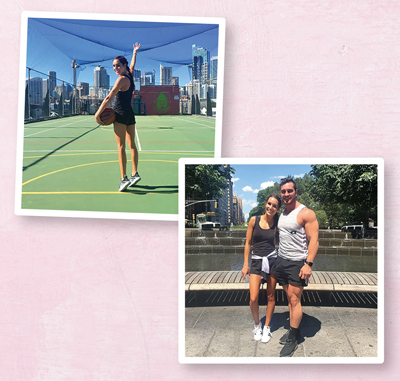
The worst part is, the more you think these things in your own mind, the more they become a visual reality for you when you look in the mirror. This doesn’t necessarily mean they are real, but the more you think and feel it, the more you see it.
No matter how much negative media you see, or how often you think about yourself critically or negatively, it doesn't matter—you can overcome all of this. The first step is becoming really clear about what you actually want, and often it isn’t just the six-pack abs or a lifted bum.
Throughout my years of experience, the more I talked to my female clients it became obvious that many girls aspire to a specific yet common goal, and it’s not necessarily just a certain body shape or a toned body.The body type they aspire to is a far cry from the overly muscular look that a lot of women often obtain through training. I found that some trainers in this industry either don’t understand, or don’t listen to their client’s goals, and are therefore unable to advise women in a way that will help them attain these goals. I think trainers and coaches alike often aim for only physical changes in terms of your abs or body fat percentage, which are not one of the three measures I like to use to grade health and/or happiness.
WHAT WOMEN REALLY WANT IS THE CONFIDENCE, STRENGTH, AND POSITIVE PHYSICAL CHANGE THAT COME AS A RESULT OF A HEALTHY LIFESTYLE.
WHAT IS HEALTH, CONFIDENCE & STRENGTH?
Through my experience, I have learnt that health, confidence, and strength are three key aspirations for most, if not all, women. To clearly understand what this means, I have defined them below in a way that is relevant and relatable to each of our lives.
Health—relates to your physical state. It’s not necessarily just about having strong abs, but do you look healthy, is your skin clear, do you have good posture, are you “glowing”?
Confidence—relates to your emotional state. Not necessarily just being confident wearing a bikini, but when you look at yourself in the mirror, do you feel powerful, do you feel happy in your own body? Can you walk down the street with your head held high, empowered that you can do anything in the world?
Strength—relates to your mental state. Not just about how much weight you can lift, but how much you can endure. When you have a bad day, can you lift yourself up? How strong and sound are your internal thoughts about your health, your mind, and your body?
I BELIEVE THAT THROUGH THESE THREE WORDS, WE CAN ACHIEVE HAPPINESS THROUGH DIVERSITY.

Confidence is knowing your worth and loving yourself…
…DESPITE WHAT ANYONE ELSE THINKS OR SAYS.
My work is, and has always been, entirely about making women feel comfortable in their bodies, confident in life and strong enough to keep going each day. The journey of life, health, and happiness is much more comprehensive than just losing a few pounds. I don’t believe everyone has to do the same thing, but I do believe everyone should do something each day to feel better about themselves, whether it be physically or emotionally. The biggest problem some women have is knowing where to start and what is right for them.
I have heard many trainers, fitness professionals, and individuals say lots of different things about how to get “results,” such as what IS required, what is NOT required, shortcuts you can take, and things to avoid. Everyone has probably heard the following mantras: “Life is all about 80% diet plus 20% training” and “Eat whatever you want, just train at 120%.” I firmly believe neither of these are the answer. My answer is being 100% committed to a healthy lifestyle and fully understanding the flexibility, simplicity, and balance you can have.
While we are all entitled to our own opinion, in this book I am hoping to clear up some of this confusion for you. This will allow you to focus on your goals and get better results by implementing real-world habits for good health into your lifestyle using a simple, flexible method.
Your lifestyle includes a range of things, from the foods you eat to the beverages you drink, how much exercise you do, how much sleep you get, how much work/study you do, and so much more! There is much to consider when accommodating your life, the world and the way it rapidly changes, and your health.
I want to help educate girls from all over the world, and help them understand that exclusionary diets or stringent training styles are not necessarily the best or only way to go. Rather, a well-rounded, healthy lifestyle can be far more flexible, beneficial, and enjoyable.
I always say that with a more educated mind, you will find it easier to obtain the things you want in life by wasting less time, energy, and emotion.
BE HEALTHY, BE CONFIDENT, BE STRONG.
So, how do we get healthy, confident, and strong?
And how do we stay that way?
I believe that to be healthy, confident, and strong, not only now but in the long term, your lifestyle should reflect your physical, emotional, and mental appearance.
In order to maintain this over a long period, three key points need to be practised daily.
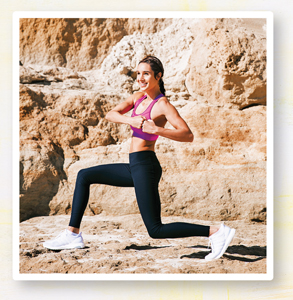
1 BALANCE
If you do not have balance, you cannot be steady. A lack of balance makes it easier for you to “fall over” and lose track of your health.
2 FLEXIBILITY
In order to have a balanced lifestyle, your choices need to be flexible to accommodate the real world. Your life and the world change every day, so you need to adapt to your environment and make the best choices possible in real time. No one can be perfect, because the world is not perfect or consistent.
3 SIMPLICITY
In order to have a flexible lifestyle, you need to lead a simple one. If your nutrition, training, or social regime is too complex, it limits your ability to adapt as necessary.
I BELIEVE THESE THREE QUALITIES PROVIDE THE FOUNDATION FOR SUCCESS, MUCH LIKE A WELL-BUILT BRIDGE. A BRIDGE IS WELL BALANCED, FLEXIBLE TO ALLOW FOR SOME MOVEMENT, AND USES SIMPLE TECHNOLOGY TO MINIMISE RISK AND ALLOW FOR CHANGE IN THE FUTURE.
“WITHOUT SIMPLICITY, WE CANNOT LEAD A FLEXIBLE LIFE. WITHOUT THE FLEXIBILITY TO ACCOMMODATE REAL-WORLD SCENARIOS, WE CANNOT BE BALANCED. IF WE ARE NOT BALANCED, WE WILL ULTIMATELY FALL OVER.”
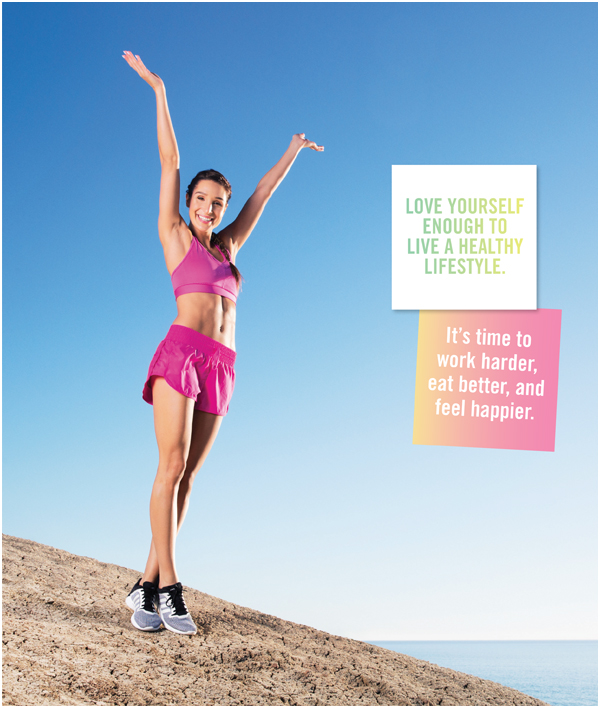
MY METHOD
BALANCE, FLEXIBILITY, SIMPLICITY
My experience tells me that these three principles, applied to all aspects of your lifestyle (including your diet, training, socialising, resting, and rehabilitation), are the best way to achieve health and happiness.

Nutrition
Healthy eating is essential for everyone. I am not in the business of promoting exclusionary diets (“no carbs” or “no fats”), but I am in the business of advocating balanced, healthy eating.
Rather than counting calories to control food intake, I prefer to use a simpler method based on food groups and serving sizes. While I understand that monitoring food intake is important, I do not believe that calorie counting is always the best or only way to do this. This is because, for many people, it can be a very tedious process, especially if not understood properly.
Sometimes when we delve into calorie counting and macronutrient distribution too much, we can get lost, confused, and make mistakes. This is typically the sort of nutrition profiling that an elite athlete would use, but I don’t believe that it is mandatory in order for everyone to maintain good health. Further, I don’t believe that it provides the same level of flexibility, balance, or simplicity that the food group distribution method does for most individuals.
In my opinion, the well-planned food group distribution method that I have devised in collaboration with dietitians is much simpler because it involves adding and subtracting easily manageable numbers. This can be a huge timesaver when planning meals!
As well as helping you meet the recommended calorie and nutrient requirements each day, it also allows you to easily substitute one food for another, while managing the calories and macronutrient content is done behind the scenes for you.
So, instead of endless analysis or breakdown of the amounts of calories, carbs, protein, fats, or vitamins, in my method you’ll just see “exchange 2 slices of bread for 1 wrap.” I’ve done the work for you. Less to think about means less stress for you!
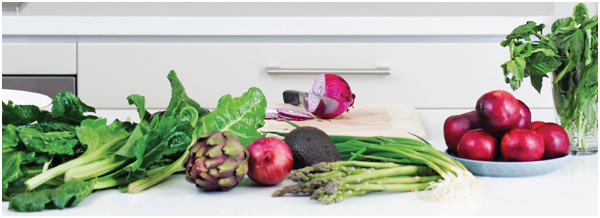
Training
Healthy eating alone is not the solution to sustaining comprehensive, long-term health. It is of primary importance that we also engage in regular physical activity with some form of resistance in order to stimulate our muscles. This resistance could be the weight of your body while you walk or jog, or using weights while you work out.
This physical activity benefits your body by:
• strengthening your muscles
• increasing your bone density
• improving your cardiovascular health
• decreasing your risk of lifestyle diseases
• reducing your risk of injury from a sedentary (inactive) lifestyle.
It is important to remember that in order for any positive change to occur, there must be a stimulus (activity) of some sort. It doesn’t necessarily need to be a lot—as few as two to three 30-minute walks during the week will be beneficial to someone who lives a sedentary lifestyle. I always recommend, when possible, getting a good balance of and variation between cardio and resistance workouts to stimulate your muscles in multiple ways for maximum benefit.
My training plans generally consist of two to four cardio sessions (of varying intensity) and three resistance circuit training sessions per week.
What is resistance training?
Resistance training involves using some form of resistance to increase the difficulty of different types of muscle movements. The resistance can come from your own body weight (as with squats or push-ups), or external weights such as dumbbells.
My resistance workouts include a mix of plyometric (jump), body-weight and strength-building exercises, which have been incorporated into high-intensity circuits.
What is cardio training?
The word cardio is short for cardiovascular exercise, which is essentially any form of aerobic exercise, such as walking, running, swimming, or cycling. Aerobic means “in the presence of oxygen” (think “AIRobic.”)
The two types of cardio that I recommend are:
• Low-Intensity Steady State (or “LISS”), which is equivalent to 30–45 minutes of walking or any other form of low-intensity cardio.
• High-Intensity Interval Training (or “HIIT”), which is equivalent to a 30-second sprint (defined as “work”), followed by a 30-second walk (defined as “rest”). These “work” and “rest” periods are then repeated for a designated amount of time, usually 10–15 minutes.

Lifestyle
In the same way it is important for us to have a good balance of nutrients in our diet and a variety of types of exercise in our training, it is also very important to have a balance of work and play in our lives. This can be the most difficult balance to achieve, because it doesn’t just involve managing your own needs, but also how your needs integrate with those of others.
As funny as it may sound, we all need a little stress to operate at our best. Living with a positive amount of stress and stimulation means you continue to develop emotionally and intellectually, in the same way that exercising regularly develops you physically. This development helps us appreciate the “rest and recovery” time in our life better and helps us grow as people. Without any stimulation, we can become bored and complacent, in the same way that without rest we become tired and irritable. This can often lead us to make bad decisions in one area of our life or another.
Having a healthy balance of social life and work life is hugely important. Part of this is choosing the people who are around you most, like your best friends. Being a Greek Australian, my family is huge, and I definitely understand you can’t choose your family. However, your best and closest friends, the people you choose to associate with most, are often the people who will help shape your life, and you can definitely choose them! This is your own personal community. The support that this personal community can provide is something that has helped many of my clients be successful at changing their life. This sometimes means you need to choose that friend who will say, “Hey, okay, I’ll join you at the gym” rather than “Go to the gym by yourself later, because I want coffee now.” A good friend doesn’t just look out for themselves—they’ll respect your lifestyle, your needs, and your choices, regardless of whether or not they share the same priorities.
CHECK OUT THE HASHTAGS #SWEATWITHKAYLA #BBGCOMMUNITY AND #KAYLAITSINES TO CONNECT WITH MILLIONS OF WOMEN WHO ARE UNITING THROUGH HEALTH AND FITNESS AND WILL SUPPORT YOU ALL THE WAY.
The importance of sleep
One aspect of a healthy lifestyle that is commonly overlooked is getting enough sleep. Although many might view sleep as just lying for hours with your eyes closed, it is so much more than that! It gives our brain the chance to process everything we’ve learnt or experienced that day, as well as to prepare for tomorrow. Sleep helps you stay focused and make decisions, and it regulates your mood. When we sleep, it gives our body the chance to repair itself (hence the term “beauty sleep”) and ensure our regulatory hormones stay in check.

“Kayla, this seems like a LOT of information to remember. What if I can’t do it all?”
HOW NOT TO FAIL
Be realistic, expect change, and be educated.
Be realistic
QUICK FIXES DO NOT EXIST. There is no shortcut to good long-term health, because you can’t rush to the end of a lifelong journey. As I always say, you can’t fake fitness, and fitness is dedication and consistency.
Expect and welcome change
The world is a constantly changing place. Your work hours might change, your location might change, or there might suddenly be a worldwide avocado shortage! When the world changes around you, you need to change with it, so be prepared to adapt and be flexible (but seriously, I hope there is never an avocado shortage—haha!).
Educate yourself
Really learn what it is you’re doing and what the actual commitment is that you’re making. You wouldn’t sign an important contract without reading it, so why would you just believe what’s in the diet pages of a book without understanding all the principles that back up this information? Having trust in an author or your trainer is one thing, being naive is another. With a fuller understanding of what you’re doing, you’ll do it better, make fewer mistakes, and have fewer questions to ask during the process. You should be more concerned with sticking to the plan (and how it suits your life) and succeeding, than with second-guessing whether you’re doing everything right.
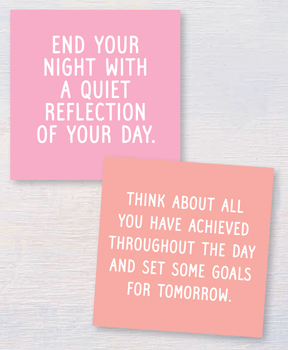
FAILING TO PLAN IS PLANNING TO FAIL.
To keep things simple, try to focus on key principles, such as:
• why good nutrition is important
• what energy requirements are
• how fat and weight loss work
• any allergies or food intolerances you may have
